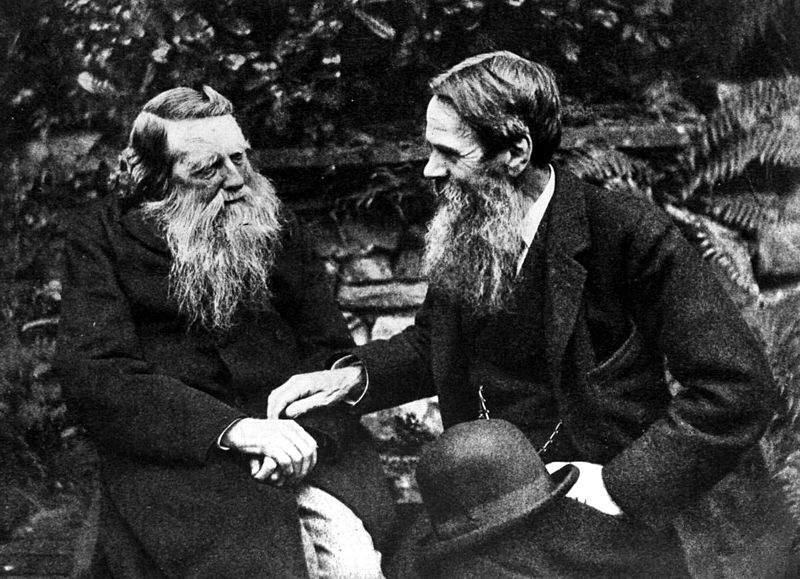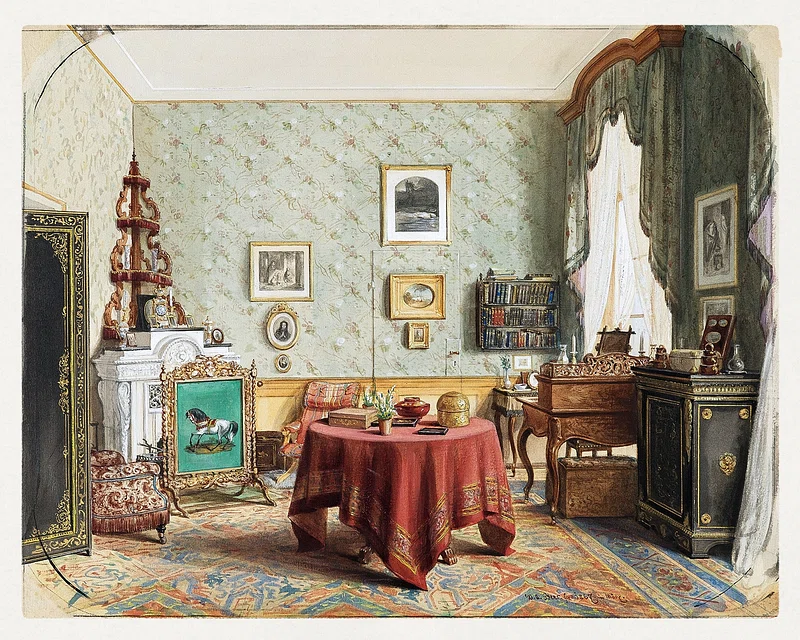In the latter half of the 19th century, amidst the smoke and clatter of the Industrial Revolution, a beacon of artistic and social reform emerged in Britain. The Arts and Crafts Movement, with its roots deeply planted in the soil of reaction against the era's mechanisation, sought to restore the beauty and dignity of handmade goods. This movement wasn't just an artistic endeavour; it was a socio-political campaign that strived to improve the conditions of workers and to reconnect people with the craftsmanship that the machine age had eroded.

The origins of the movement are often traced back to the writings and lectures of John Ruskin. Ruskin (pictured above alongside William Holman Hunt) lamented the loss of individual craftsmanship and advocated for a society that values art and beauty alongside moral and social health. His influence on William Morris was profound, shaping the latter's philosophy and the ethos of the movement. Together, they envisioned a world where art could flourish free from the constraints of mass production, and where the worker could take pride in their craft.

The early stages of the Arts and Crafts Movement were marked by a surge of interest and participation. Guilds and societies sprang up across Britain, including the Guild of Handicraft and the Art Workers’ Guild, fostering a community of artists, architects, and artisans committed to the cause. Exhibitions became a key platform for promoting the movement's principles, showcasing the beauty of handcrafted items and the potential for a harmonious blend of function and form.
The influence of the Arts and Crafts Movement was not confined to the British Isles. Across the Atlantic, it found fertile ground in the United States, where it inspired the Craftsman Style and the work of figures like Gustav Stickley. Similarly, in Europe, it resonated with the Jugendstil in Germany and the Sezessionstil in Austria, among others. These international offshoots adapted the core principles of the movement to their local contexts, creating a global tapestry of artistic and social reform.
However, like all great movements, the Arts and Crafts Movement eventually found itself at a crossroads. The very challenge it faced from the start — the tension between artisanal craftsmanship and the need for production that could meet the demands of a growing market — led to its gradual decline in the early 20th century. Yet, its end was not a quiet fade into obscurity. Instead, the movement's ideals and aesthetics have continued to influence various fields, from architecture and furniture design to the broader Maker Movement of today.
The legacy of the Arts and Crafts Movement is a testament to the enduring allure of handmade craftsmanship and the value of beauty in everyday objects. It reminds us of the importance of creativity, individuality, and social responsibility in our engagement with the world around us. For aficionados and practitioners alike, the movement stands as a beacon of inspiration, urging a return to the personal touch in art and design.
In today's fast-paced, digitally driven world, the principles of the Arts and Crafts Movement are more relevant than ever. At Lithobee, we celebrate this timeless aesthetic through our selection of art prints, including those inspired by William Morris himself. Our 'Inspiration Blog' aims to connect you with the rich tapestry of art history and the movements that continue to shape our visual and cultural landscapes.



